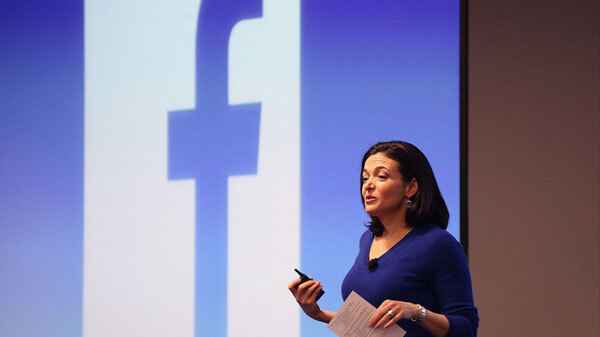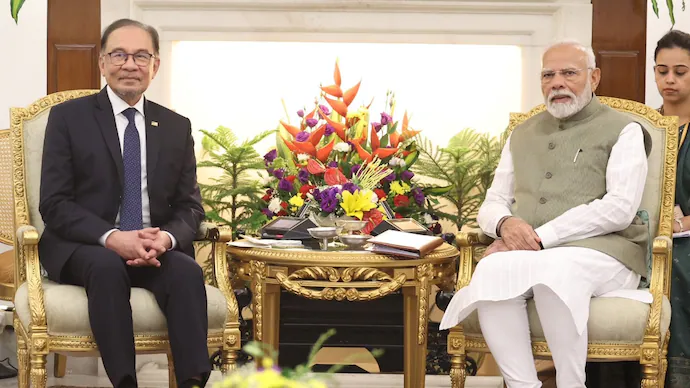Hemant Singh – Mumbai Uncensored, 3rd June 2022
Sandberg, 52, was one of Silicon Valley’s most powerful women, and her exit comes as the social media behemoth confronts a bleak future and severe competition.
Sheryl Sandberg, Meta’s second-in-command, is stepping down after helping the firm develop from a startup to a digital advertising powerhouse but also bearing responsibility for some of the company’s most severe mistakes.
Sandberg has served as the company’s chief operating officer for the past 14 years. She started working for Google four years before the firm went public, in 2008.
“When I took this job in 2008, I hoped I would be in this role for five years.” Fourteen years later, it is time for me to write the next chapter of my life, “Sandberg wrote on her Facebook page Wednesday.
Sandberg was in charge of Facebook’s (now Meta) advertising company, which he helped build from a startup to a $100 billion-a-year monster. Following allegations that some of her business choices for Facebook led to the spread of disinformation and hate speech, Sandberg, the company’s second most well-known face behind CEO Mark Zuckerberg, has become a polarising figure.
Despite being one of the most influential female executives in the internet business, she was constantly scolded for not doing enough for women and others hurt by Facebook’s products. Her public-speaking abilities, as well as her seeming ease in linking the worlds of technology, commerce, and politics, contrHis politicsarply with Zuckerberg’s, particularly in the early days of Facebook. On the other hand, Zuckerberg has been catching up, in part to prepare for impending senate investigations in which he will defend Facebook’s activities.
Neither Sandberg nor Zuckerberg stated that Sandberg’s decision to resign was a result of her own free will. However, in recent years, other close allies of Zuckerberg, including as Chris Cox, who returned to the company in 2020 as chief product officer after a year away, have been more conspicuous.
“Sheryl Sandberg had an enormous impact on Facebook, Meta, and the broader business world.” “She helped Facebook build a world-class ad-buying platform and develop groundbreaking ad formats,” said Debra Aho Williamson, an analyst at Insider Intelligence. But she added that Facebook faced “huge scandals” under Sandberg’s watch—including the 2016 U.S. presidential election, the Cambridge Analytica privacy debacle in 2018, and the 2021 riot at the U.S. Capitol.
And now, Meta is “facing a slowdown in user growth and ad revenue that is now testing the business foundation that the company was built on,” she said. “The company needs to find a new way forward, and perhaps this was the best time for Sandberg to depart.”
Sandberg will leave Meta in the autumn but will remain on the board of directors.
Javier Olivan, who presently supervises important activities at Meta’s four primary applications — Facebook, Instagram, WhatsApp, and Messenger — will serve as Meta’s new COO, according to Zuckerberg’s own Facebook post. But it will not be the same role Sandberg has held for the previous 14 years.
“It will be a more traditional COO role where Javi will be focused internally and operationally, building on his strong track record of making our execution more efficient and rigorous,” Zuckerberg wrote.
Sandberg has long been Zuckerberg’s No. 2, even sitting next to him in the company’s Menlo Park, California, headquarters — at least before the pandemic — but she also had a very public-facing job, meeting with lawmakers, holding focus groups, and speaking out on issues like women in the workplace and, most recently, abortion.
“I think Meta has reached the point where it makes sense for our product and business groups to be more closely integrated, rather than having all the business and operations functions organized separately from our products,” Zuckerberg wrote.
Sandberg, who lost her husband, Dave Goldberg, suddenly in 2015, said she is “not entirely sure what the future will bring.”
But she wrote, “I know it will include focusing more on my foundation and philanthropic work, which is more important to me than ever given how critical this moment is for women.” She also mentioned that she is tying the knot this season and that raising their five kids will be an aspect of their life.
The grown-up in the room
Sandberg, now 52, was one of the first to help Google create what would become the internet’s largest—and most profitable—advertising network. She left that position, however, to take on the challenge of turning Facebook’s freewheeling. He turned the network into a profitable corporation while simultaneously mentoring Zuckerberg, who was 23 at the time.
She proved to be just what the firm and the then-immature Zuckerberg needed at the appropriate moment, paving the way for Facebook’s much-anticipated first public offering of shares a decade ago.
Sandberg became the engine of a corporation fuelled by a quickly rising digital ad business that has grown almost as successful as the one she helped piece together around Google’s dominating search engine, while Zuckerberg remained the company’s visionary and controlling shareholder.
Facebook’s business, like Google’s, has thrived on its ability to keep its users coming back for more of its free services while leveraging its social networking technology to learn more about people’s interests, habits, and whereabouts—a nosy model that has repeatedly entangled the corporation in discussions about how a right to individual privacy still remains in a progressively digital world.
Sandberg has been looked up as an inspiration for working women as one of the top female executives in technology, a role she seemed to embrace with her best-selling 2013 book “Lean In: Women, Work, and the Will to Lead.”
However, “Lean In” was met with quick backlash. Sandberg has been dubbed a “PowerPoint Pied Piper in Prada ankle boots” by New York Times writer Maureen Dowd, and some have said she is the inappropriate person to head a women’s movement.
In a subsequent book on the husband’s death, Dave Goldberg, she addressed some of the criticism. Goldberg became a symbol of agonising sadness in 2015 when she died in a car accident while working out on vacation, leaving her widowed with two children while continuing to assist in operating one of the world’s most well-known enterprises.
Cracks in the outside
Sandberg has been a contentious figure in recent years, following allegations that some of her business choices for Facebook contributed to the spread of disinformation and hate speech. Critics and a business whistleblower claim that the effects have harmed democracy and created serious emotional difficulties for teenagers, especially girls.
Sandberg, according to Shoshana Zuboff, author of “The Age of Surveillance Capitalism,” is as much to blame as anybody for one of Big Tech’s most sinister inventions: the collecting and aggregation of data on social media users’ behaviour and preferences. Facebook has been sharing user data with marketers and business partners for years.
Zuboff wrote, “through the artful manipulation of Facebook’s culture of intimacy and sharing.”
Sandberg is dubbed the “Typhoid Mary” of surveillance capitalism by Zuboff, who refers to the benefiting off the gathering of data from social media users’ online activity, tastes, external data, and connections as “typhoid Mary.”
“Sheryl Sandberg may consider oneself a feminist, but her decisions at Meta made social media platforms less safe for women, people of colour, and even threatened the American electoral system,” said Shaunna Thomas, co-founder of UltraViolet, a gender justice advocacy group that has been calling for Sandberg’s resignation.
Sandberg has made various public gaffes at Facebook, like attempting to blame the insurgency at the US Capitol on Facebook on January 6, 2021. She stated the activities of the day were “primarily organised on platforms that don’t have our capacity to block hatred, don’t have our standards, and don’t have our transparency” in a Reuters interview later that month.
Internal emails released later that year by whistleblower Frances Haugen revealed that Facebook’s own workers were concerned about the company’s sluggish and frequently reversed response to escalating radicalism in the United States, which culminated in the events of Jan. 6.
At the height of the chaos on Jan. 6, one employee posted on an internal message board, “Haven’t we had enough time to find out how to moderate conversation without supporting violence?” “We’ve been putting fuel on this fire for a long time, so it’s no wonder that it’s now out of control.”





 Health2 days ago
Health2 days ago


 Special Editions2 days ago
Special Editions2 days ago


 Special Editions2 days ago
Special Editions2 days ago


 Special Editions3 months ago
Special Editions3 months ago


 Special Editions2 days ago
Special Editions2 days ago













